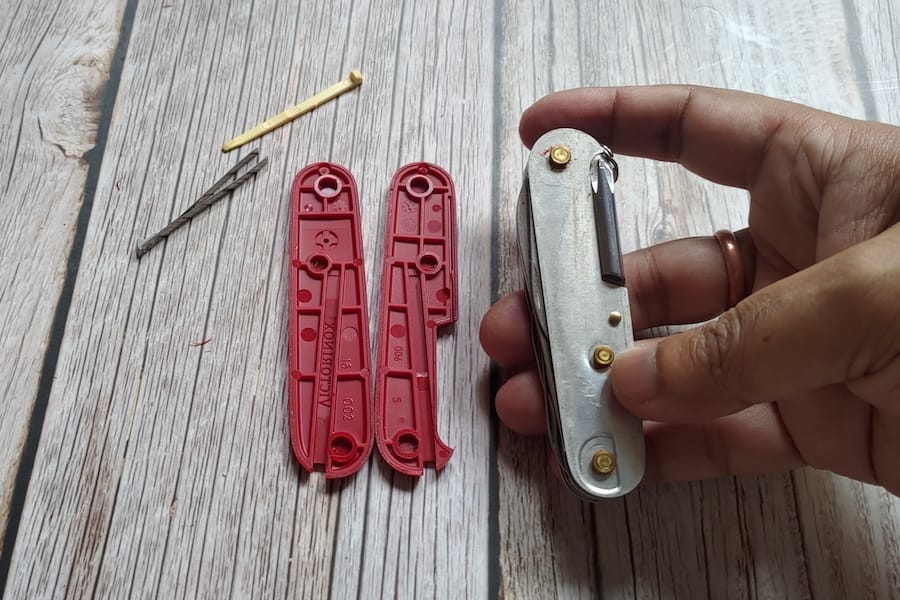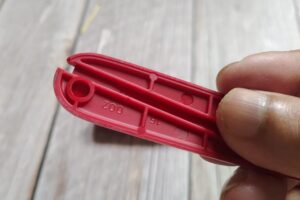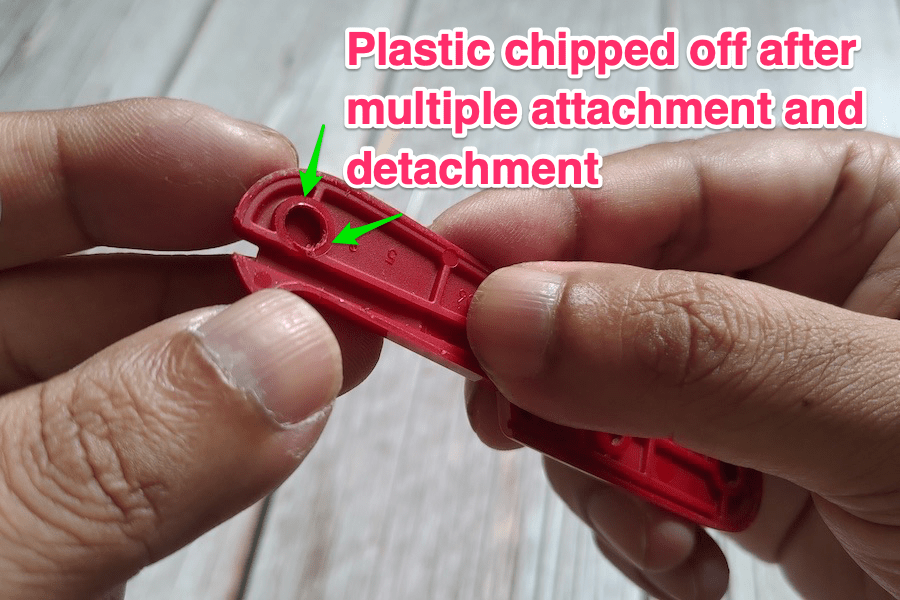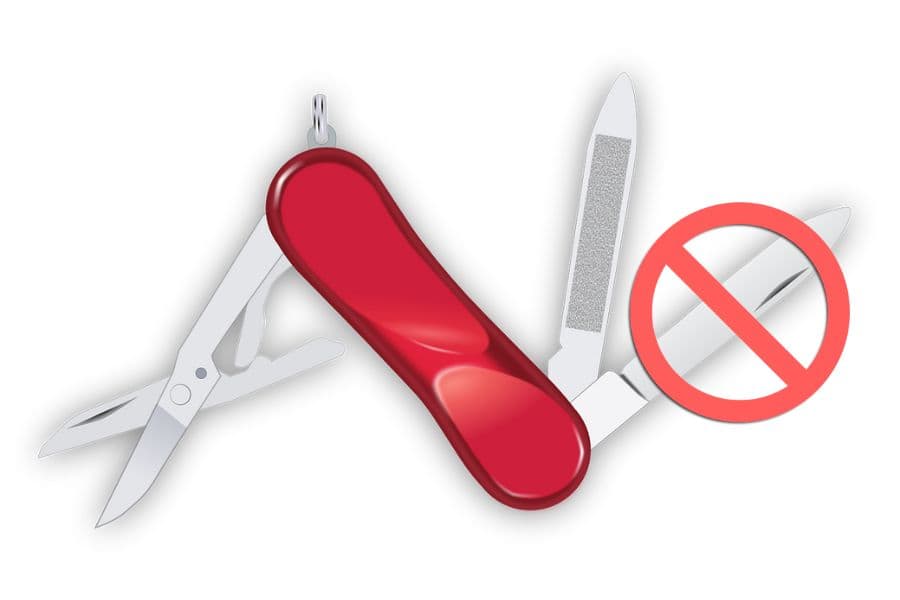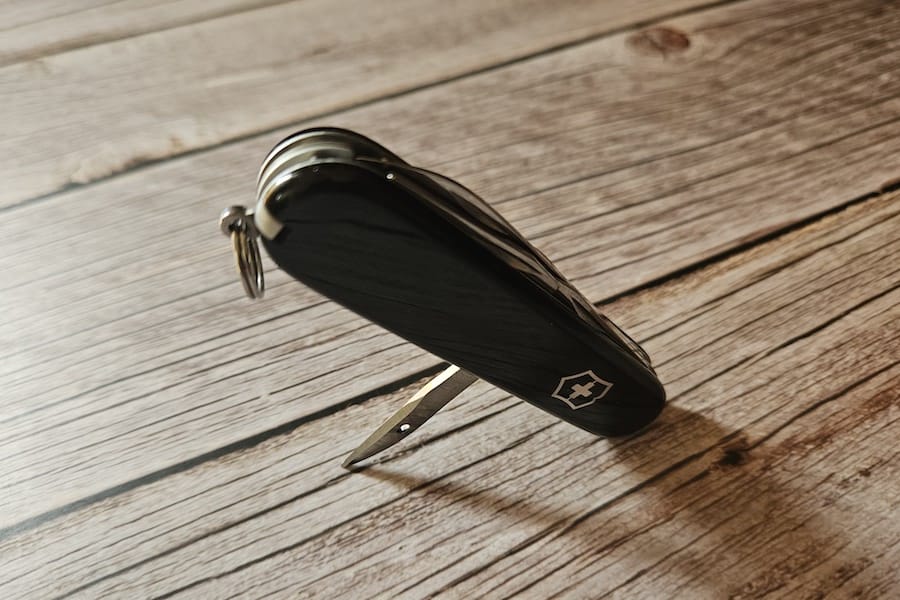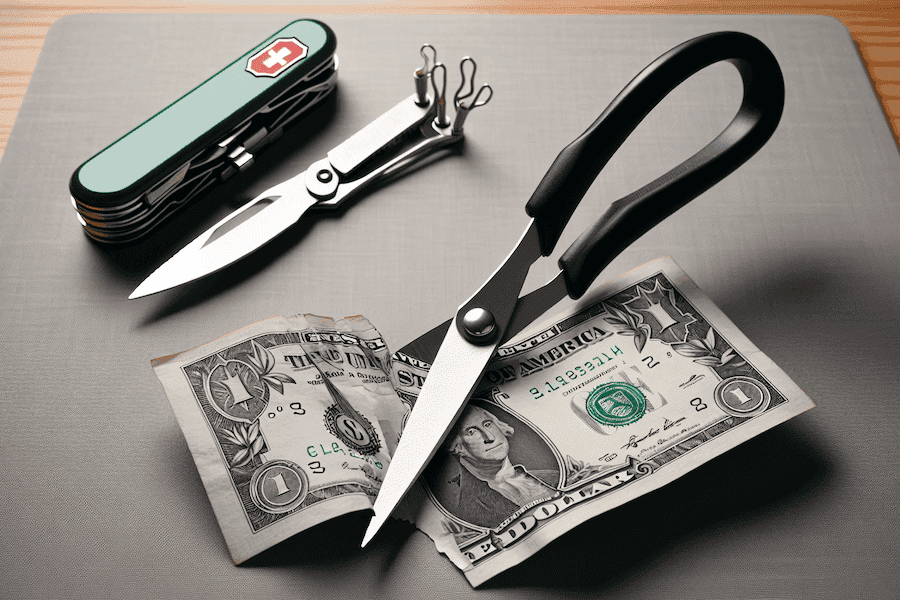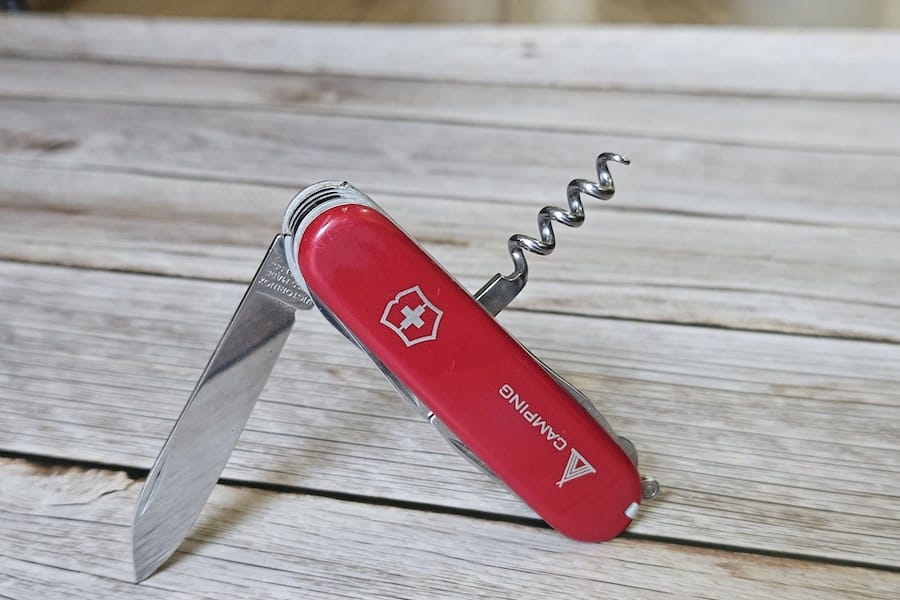Ever tried to take off the scales from your Swiss Army Knife (SAK) and found yourself stumped? You are not alone.
Many hold back due to apprehensions about damaging their valued pocket knife. But with proper knowledge and precaution, it’s entirely possible and easier than you expect!
As someone who has done this on many of my SAKs over the years, let me walk you through the process step-by-step.
A Step-By-Step Guide on Swiss Army Knife Scale Removal
Removing the scales from a SAK is a 3-step process. Just follow the steps and you will get it done in no time.
Each cellidor scale has three holes on the inner side, two at the two ends and one in the middle. The outer metallic frame of the SAK has 3 small rivets. These are precisely at the same position matching the holes in the scales.
The rivets have a little bit of head protruding outside. These go into the holes of the scale and hold it.
Removing the scale of a Swiss Army Knife involves pulling it off from the rivets.
Step-1: Remove the Scale Tools
Most Swiss Army Knives come with built-in tweezers and toothpicks that are lodged between the scales. Some SAK scales may also have a stainless steel pin and a ballpoint pen. All these scale tools are housed in small slots in the two scales and can be extracted by just lightly pulling them out.
Removing the tweezers and the toothpick will expose a sort of nook that you can use to remove the scales.
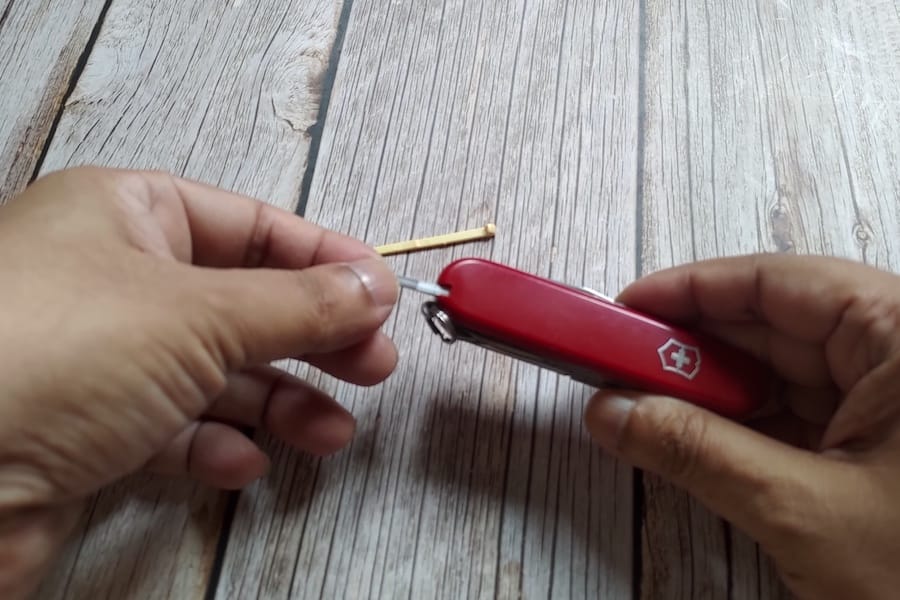
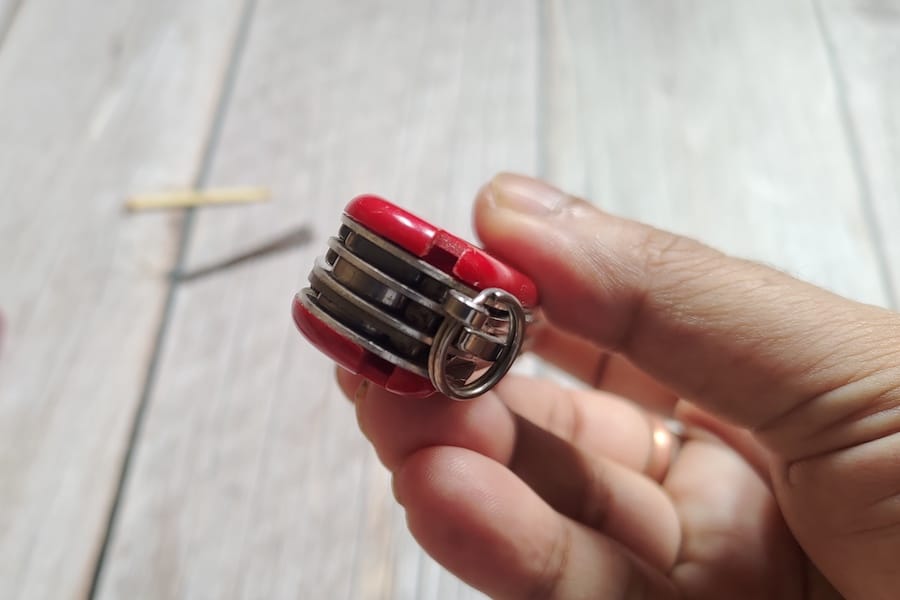
Step 2: Use the Small Blade of Another SAK
You will need something thin and strong to slide under the scales. I usually use the small blade of another SAK to do it.
Just make sure that you do not cut, scrape, or damage the scale while sliding the blade under it.
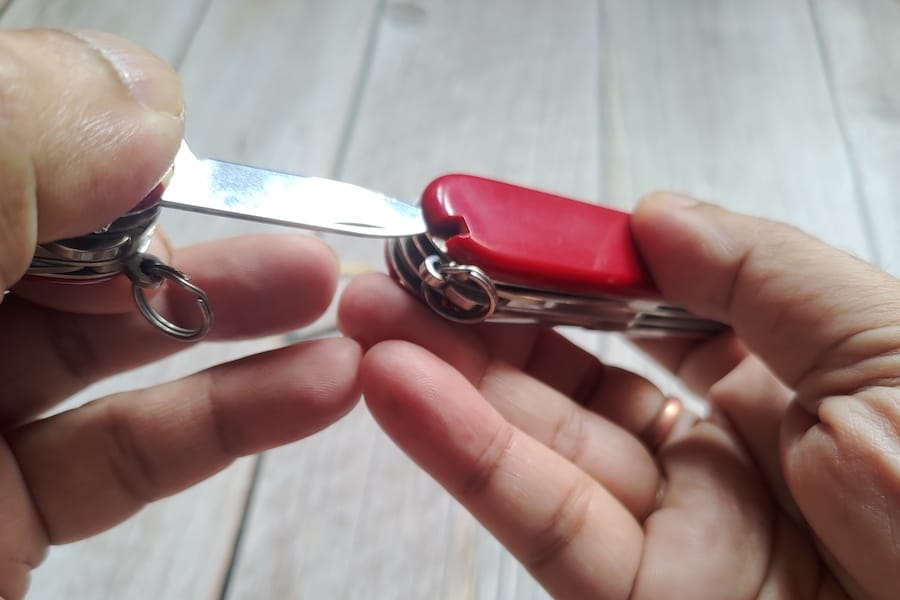
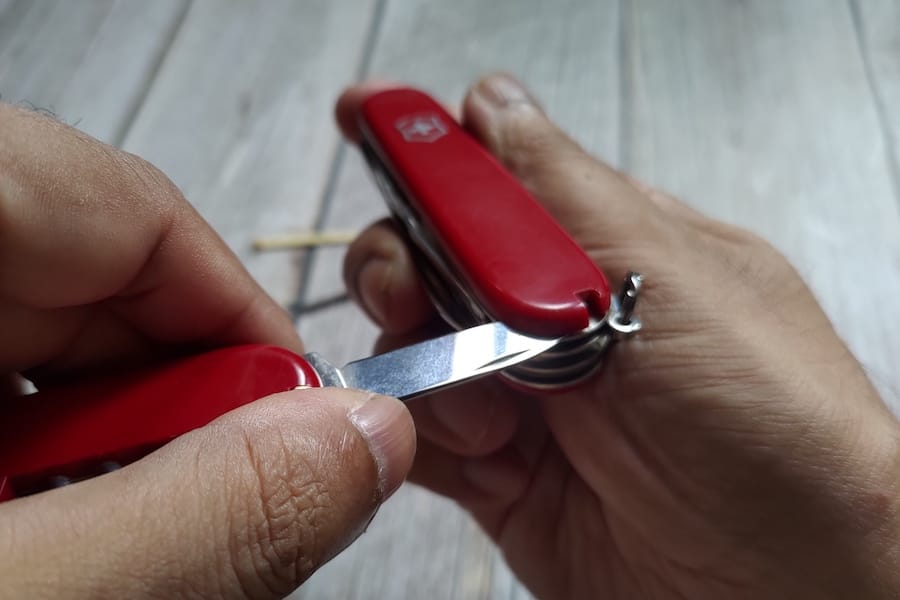
Step 3: Apply Upward Pressure to Dislodge the Scales
This is the most important step.
Start at the rivet near the tweezer slot. Put slight upward pressure to dislodge the scale from the rivet. Then slide the blade along to reach the middle rivet. Again put some pressure to lift the scale to dislodge it from the rivet. Slide along to the last rivet and do the same.
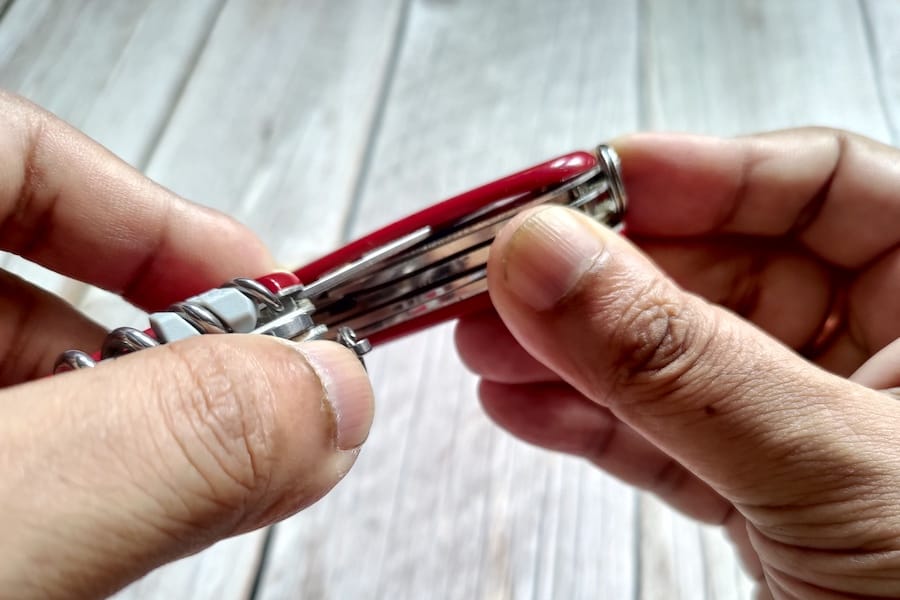

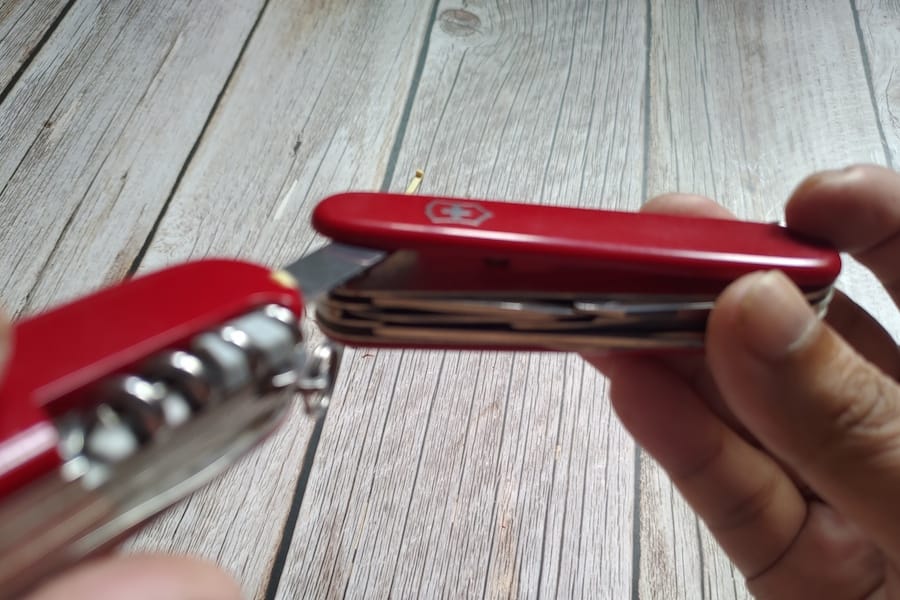
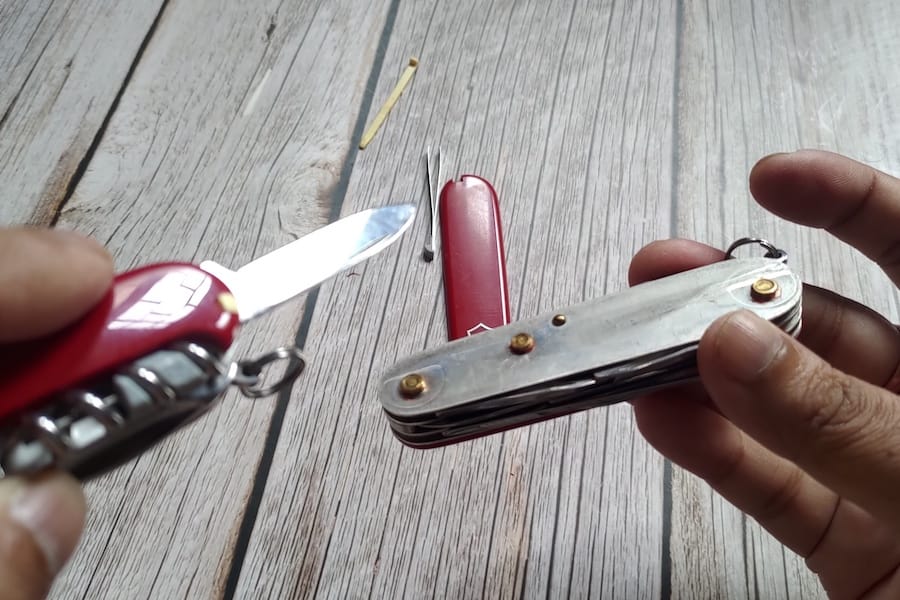
Thats it! You are done! The scale will get detached from the Swiss Army Knife.
Follow the same process on the opposite side of the SAK starting from the toothpick slot.
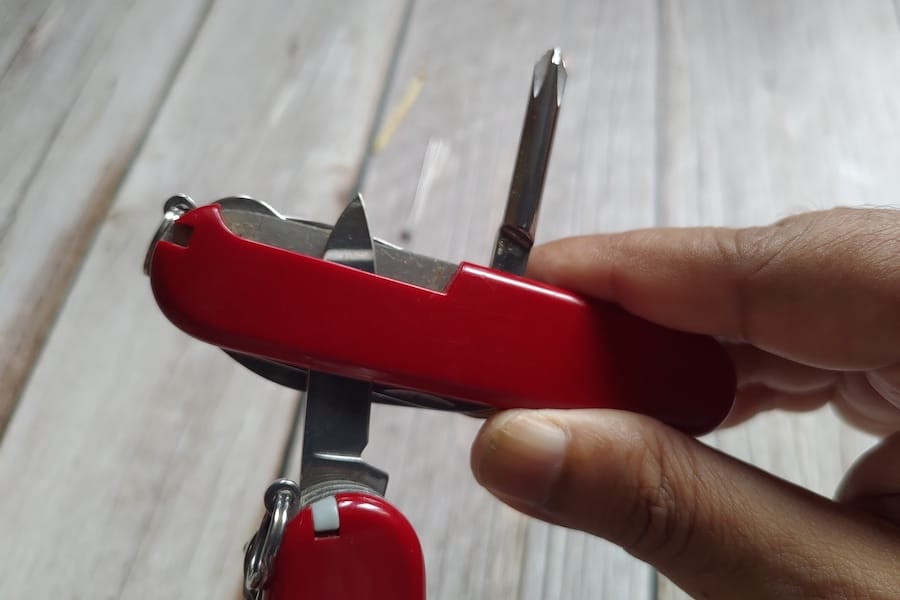

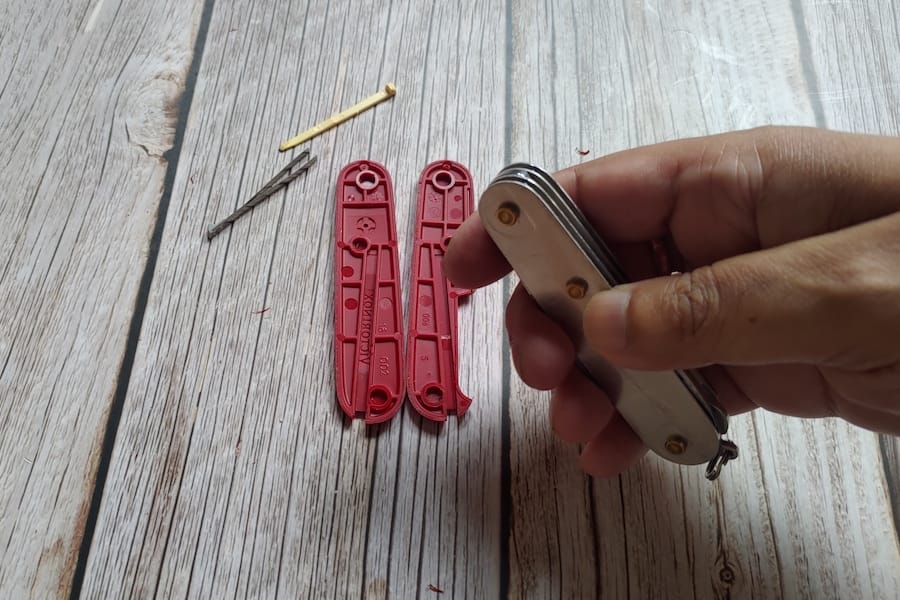
Prior to removing the scales, you can heat the SAK to soften the scales. This will help the removal process as the soft plastic will dislodge from the rivets easily.
Don’t use too much heat though. Keeping the SAK in hot water (about 50-60°C) for about 10 minutes will do it. Better yet, you can use a hairdryer to warm the SAK for 2-3 minutes. A heat gun will also do.
How to Attach New Scales on a Swiss Army Knife?
Attaching new scales (or re-attaching the old scales) on a Swiss Army Knife involves snapping them on, by pressure fitting the rivets on the outer frame to their respective holes on the inner side of the scales.
You may need to put in some extra pressure to ensure that the rivets go into the holes. Heating the scales helps here too. Softer plastic lets the rivets go in easily into the holes.

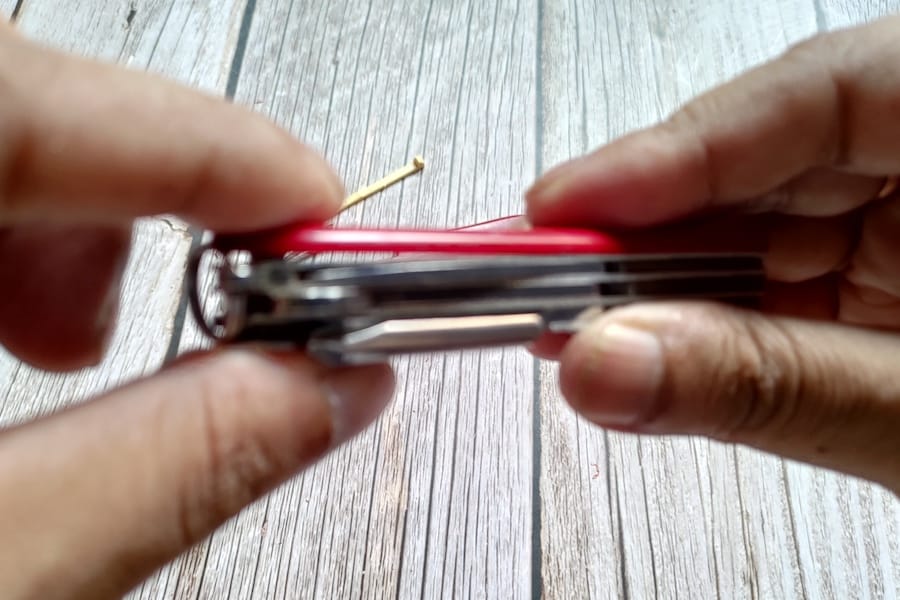
You are not done yet. You need to make sure that that the scale is attached firmly and there is no gap between the outer frame and the scale.
Once both the scales are snapped on, you can push down on the SAK with your hands on a flat surface. That should fit the scales nicely and snugly.
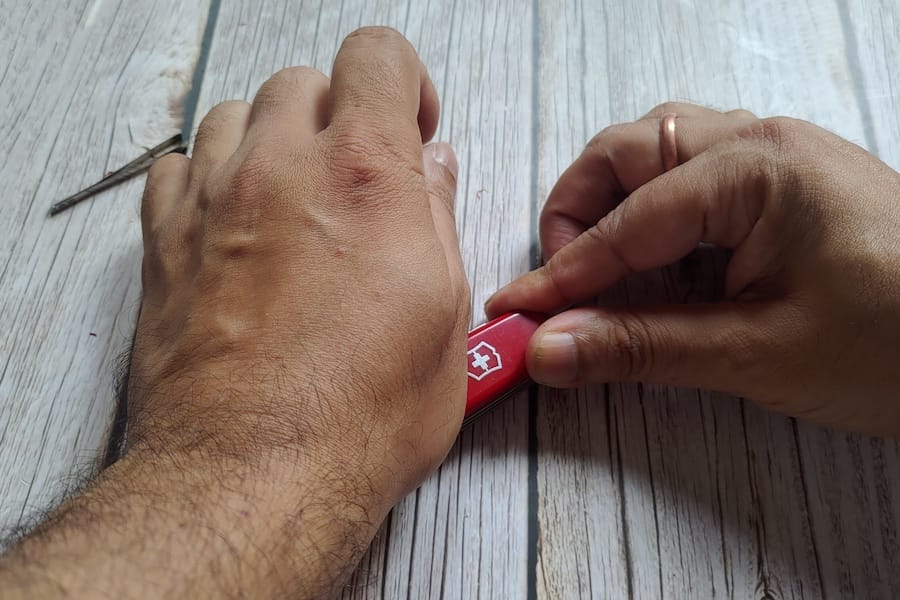
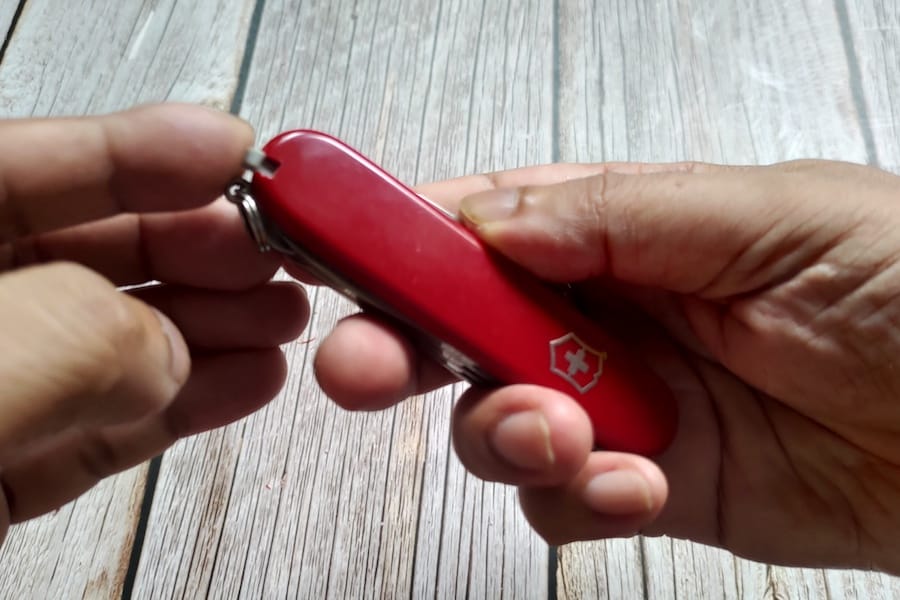
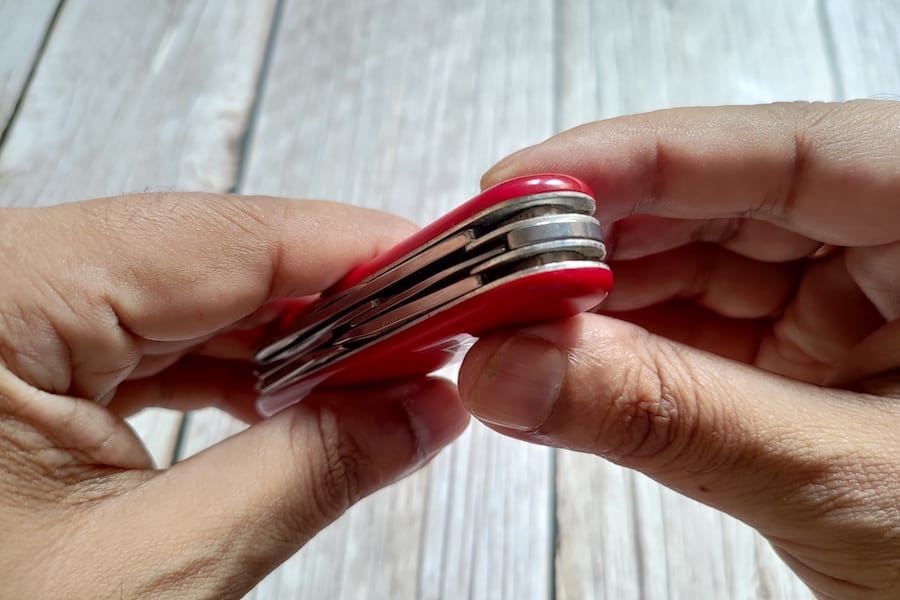
I have seen people using a vice to fit the scales on a SAK. If you prefer to do so, cover the SAK with a soft cloth before putting it on a vice to protect the scales from scratches.
In such cases, it is better to use a little glue to keep them on. However, note that this will make it harder to remove the scales the next time (in case you decide to do it).
What about Aluminium and Wood Scales?
Aluminum scales (or Alox scales) cannot be removed from the body of the Swiss Army Knife. Why? Because these scales are part of the SAK body itself.
In all Alox SAKs that Victorinox makes, the scales form the outer layer of the knife body. These are riveted permanently to the SAK. Removing the Alox scales will require drilling out the rivets. This will practically disassemble the knife as it will affect all the layers.
Wood Scales are glued to the body of the Swiss Army Knife with dual-sided glue tapes (the kind you get from 3M). As such, you cannot just pop them out by prying them. I have even heard that some SAKs have wood scales glued all around the inner surface.
The process of removing the wood scales involves weakening the glue and then prying the scales out with a thin and strong material, like the small blade of another SAK.
Hot or cold temperatures usually weaken the glue. Before attempting scale removal, you may try sinking the SAK in hot water for some time. Cooling it in a freezer may also help.
I won’t recommend trying to remove/change the aluminum scales yourself unless you are an expert in working with metals. If you really want it to be done, better send it to Victorinox and get it customized as per your desire (for a fee).
Similarly, glued wood scales will be very difficult to remove as there is every chance of the wood chipping off or breaking into pieces. There is also the chance of the liners getting damaged. You are better off getting it done by Victorinox, or through professionals who are experts at making custom SAKs.
Swiss Army Knife Scale Removal Precautions
Scale removal on a Swiss Army Knife if done improperly, can damage the tools and the knife itself. Here are some key precautions:
- Work slowly and gently when prying off the scales. Rushing can cause scratches and dents.
- Do not heat the SAK too much, as it will warp and deform the scales, permanently damaging them. High temperatures may also fade the scale color.
- If possible, try to avoid very sharp objects for prying in between the scale and the SAK body. You may use something like the watchcase opener tool.
- Pad your work surface to cushion the knife when prying off scales.
Final Thoughts
That’s all you need to know about removing and replacing scales on your trusted Swiss Army Knife! When I did it the first time, the sense of accomplishment and pride from DIYing it myself was so rewarding.
Want to further personalize the scales? You can consider engraving the scales of your SAK.
Swiss Army Knives last long (if you take good care of it), but the scales do wear out eventually. I consider replacing damaged or worn-off scales from the Swiss Army Knife part of its maintenance in general.

